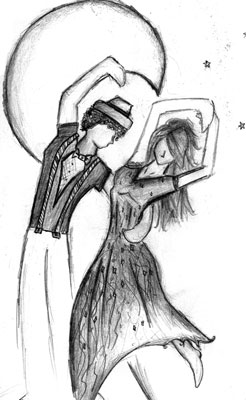All Nonfiction
- Bullying
- Books
- Academic
- Author Interviews
- Celebrity interviews
- College Articles
- College Essays
- Educator of the Year
- Heroes
- Interviews
- Memoir
- Personal Experience
- Sports
- Travel & Culture
All Opinions
- Bullying
- Current Events / Politics
- Discrimination
- Drugs / Alcohol / Smoking
- Entertainment / Celebrities
- Environment
- Love / Relationships
- Movies / Music / TV
- Pop Culture / Trends
- School / College
- Social Issues / Civics
- Spirituality / Religion
- Sports / Hobbies
All Hot Topics
- Bullying
- Community Service
- Environment
- Health
- Letters to the Editor
- Pride & Prejudice
- What Matters
- Back
Summer Guide
- Program Links
- Program Reviews
- Back
College Guide
- College Links
- College Reviews
- College Essays
- College Articles
- Back
Folk Dance in Different Places Around the World
Introduction
Imagine yourself doing a folk dance. Are you wearing an exquisite dragon costume or wooden clogs? What about a brightly colored outfit or a mask? Are you by yourself, or with a partner? You could be dancing at a promenade, or on the streets. You may wonder what culture you are representing. Today I will show you around the world as we find out how dance differs in France, China, Mexico, and Africa. Let's Go!
Folk Dance in France
Our first stop is France. France takes dance very seriously. This means that the dancers are probably very docile. There are many types of dance including the bourée and French basse dance. The bourée is one of the most popular folk dances of France (Kwait). You may see dancers wearing clogs. This is because wooden clogs emphasize the sound of their foot movements. The bourée is a line dance. This means that a line of men face a line of women.
The French basse dance has two types, regular and irregular (Kwait). The number of steps are different. It can be danced in many different ways. One of the ways the French basse dance can be performed is in a chain. This is when dancers link together and move side to side.
Folk Dance in China
China has many different types of dance. This is because folk dances usually reflect that group's ethnic, cultural and religious beliefs. For example, the choreography and costumes can change depending on their thoughts and beliefs. Some popular dances in China are the lion dance, the dragon dance and the court dance (Wu). In the lion dance, only two people dance and they dress up as lions (Wu). It would be fun to see lions dancing along the streets of China. The dragon dance requires at least ten dancers (Wu). This dance needs a lot of dancers because the elaborate dragon prop is usually quite large and probably heavy. In the dragon dance, everyone dresses in one large dragon costume or holds up a dragon. (Wu). That will be hard to miss if you’re in China. The court dance is to remind the royal people to always be prepared for battle.
Folk Dance in Mexico
Now we are arriving in Mexico! Mexican dance provides a glimpse of culture, like all folk dances. The dances from Mexico express the music and rhythms, but they also show bright colors in their costumes. In Mexico, dance is performed at birthday parties, religious events, agricultural celebrations, et cetera (Hanson). Two popular dances in Mexico include the jarabe tapatío and la danza del venado. The jarabe tapatío is also called the Mexican hat dance. It was named the national dance of Mexico in 1924 in an effort to bring together several different cultures together (Hanson). The jarabe tapatío is a symbol of Mexico. It is a joyous dance, usually done with a male and female.
La danza del venado is also known as the deer dance. This dance illustrates a deer hunt. In la danza del venado there are dancers acting as hunters and deer (Hanson).
Folk dance in Africa
We are in Africa! African dance is an important role to the culture of a tribe. African dance has a larger purpose than entertainment. The dances communicate emotions, celebrate the rites of passage, and help strengthen the bonds between members of a tribe as a whole (Miller). Masquerade is a popular style of African dance (Miller).Masquerade dance usually uses a mask. The clothing and costume for the masquerade dance varies. Masquerade dancers are a feature of religious societies in many areas. There are four main roles, those who embody deities or natural spirits, those who embody the ancestral spirits, those who placate the spirits through their dance, and those who perform as entertainers (Miller). In Africa, there are also work dances that express people's occupational skills (Harper). “Hunters may reenact their exploits or mime the movements of animals as a ritual means of controlling wild beasts and allaying their own fears,” said Peggy Harper, a former senior research fellow in dance.
Your Future with Cultural Dance
Did you enjoy your journey around the world to France, China, Mexico, and Africa? I know I did! I hope you realized the similarities and differences between these cultures. You should seek out your own cultural dances about other countries because it is good to learn about how other people live their lives. You already know about 4 different places, so let's learn more!

Similar Articles
JOIN THE DISCUSSION
This article has 0 comments.

I love dancing and wanted to learn more about it's history!